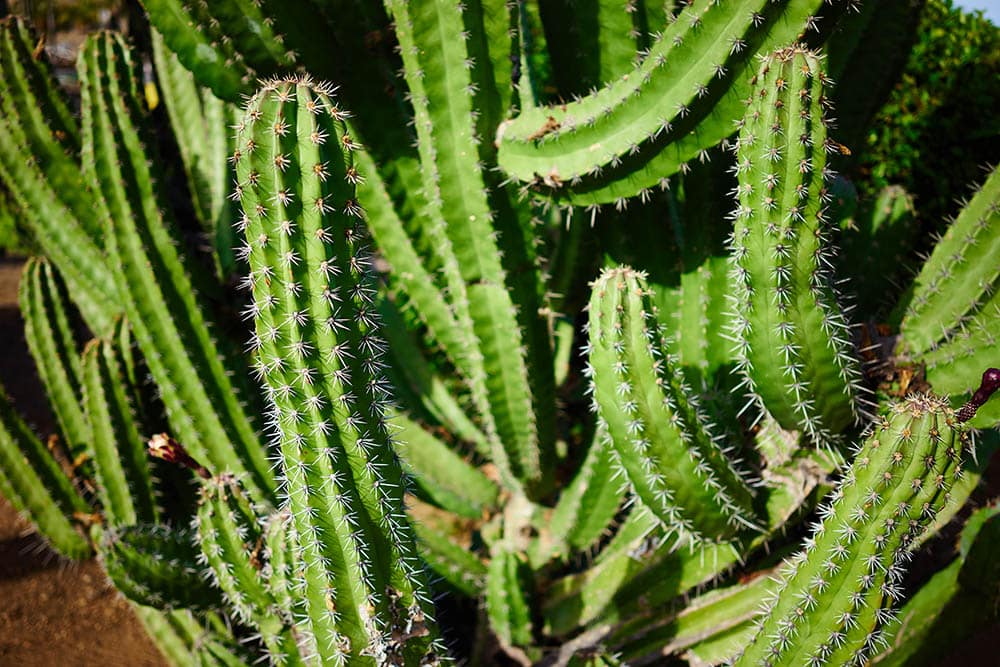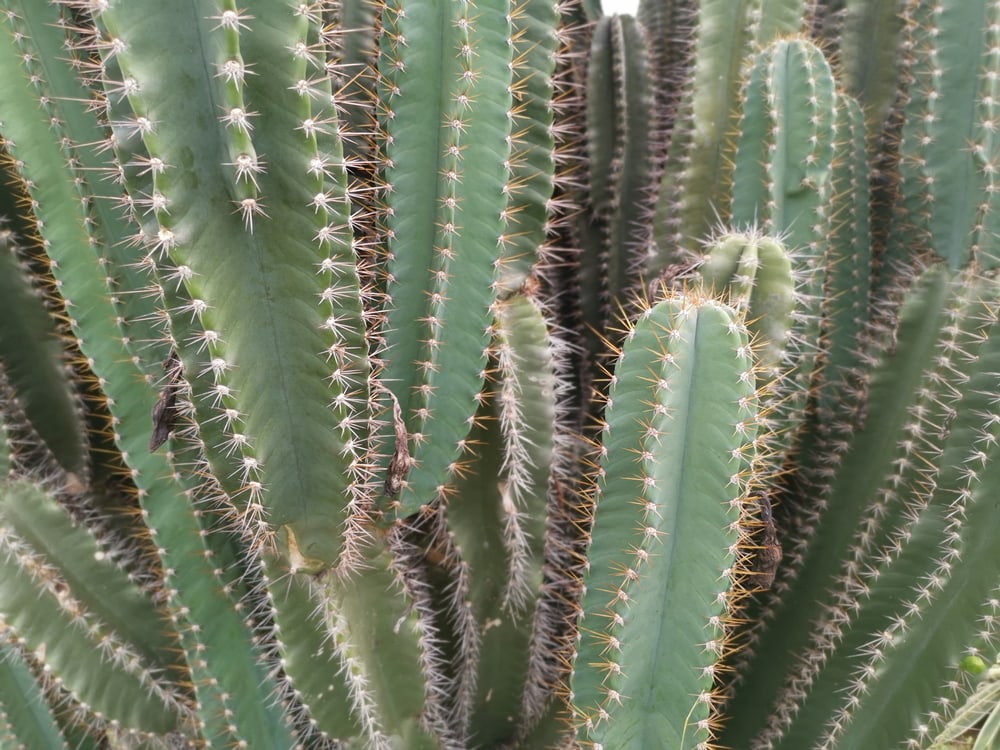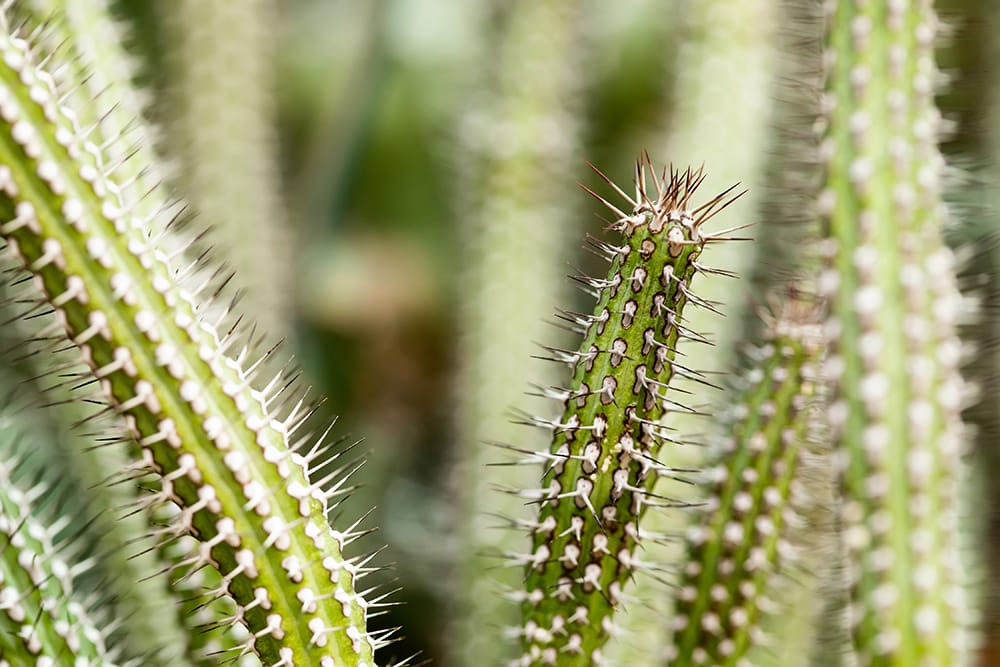Why Does a Cactus Have Spines? The 4 Distinct Reasons
-
Pete Ortiz
- Last updated:

Cactuses are famous for their bulbous green bodies and their numerous pokey spikes. Cactuses grow with great density in arid desert environments that include a lot of sun and little water. Cactuses are common sights in these environments. But why does a cactus have spines? The answer is deeply connected to the environments that cactuses evolved in.
The 4 Reasons That Cactuses Have Spines
Many people simply assume that cactus spines are there to keep predators and curious animals away from the cactus. Cactuses are known to have water and edible insides in places where food and water are scarce. That is certainly part of the equation, but it is only one part of the full picture.
1. For Defense

Defense is certainly one of the uses for the spikes on a cactus. The spikes make animals think twice before approaching these stately plants. Cactuses do not want animals burrowing inside them, eating them, digging under them, or landing on them. The spines prevent lizards, birds, tarantulas, and roaming predators from disturbing the cactuses as they stand in the desert. The spikes even make people think twice before messing with the spiny plants.
Unfortunately for the cactuses, their spines are not a foolproof defense against hungry desert animals. Bighorn sheep, wild hogs, desert rats, and tortoises manage to evade the worst of the spines to gnaw on and eat cactuses in the desert. In fact, cactus is one of the desert tortoise’s favorite foods.
2. Shade
The slender spines of a cactus might not seem like something that would provide a lot of shade, but that is far from the case. The hundreds, or even thousands, of spines on a cactus, create a patchwork of shade that keeps the body of the cactus cool. The entire cactus is usually covered in spikes, which means no matter what direction the sun is facing, the cactus is going to be receiving some sort of shade. Whether the sun is rising, high in the sky, or setting, the cactus’s spines are going to intercept some of the blazing sunlight and create some shade.
Cactuses can live for a very long time, so even a little bit of relief from the sun per day can add up over years or even decades. Anyone who has longed for a little bit of shade when experiencing ruthless heat knows how miserable it can be to be unprotected in strong sunlight. The numerous spines work together over time to keep the cactus cool and protected from the unforgiving desert sun.
3. Condensation

Another thing that is important when you are immobile in the desert is water. The spines on a cactus vastly increase the plant’s surface area. A cactus without spines will have much, much less surface area than a cactus with full spines. In the desert, the surface area is extremely important. The greater the surface area, the greater the chance of collecting condensation.
Condensation occurs on surfaces when the conditions are just right. The combination of humidity, temperature, and airflow combine to allow water to collect on surfaces and bead into droplets.
Cactus spines work to collect condensation, which then allows the water to run down and hit the cactus. Water will hit the body of the cactus and run down into the sandy soil below. This allows the cactus to absorb the water without needing any perceptible rain.
During certain days or special seasons, the air in the desert can be filled with moisture. Sometimes fog rolls in from the distant oceans, and other times humidity will sink in from nearby mountains. In these conditions, cactuses sit patiently and wait for their spines to collect tiny amounts of water via condensation. Spines help cactuses live much longer by increasing their ability to obtain water in otherwise arid environments.
4. Water Retention and Regulation
Water is no good if you cannot retain it. A cactus’s spines also help cactuses retain water by hampering airflow and disrupting evaporation. As air swirls around a cactus, it is broken up by thousands of tiny spines. This prevents the air from collecting condensation and ambient water from the surface of the cactus. The spines also prevent water from evaporating effectively. As the water and heat try to travel upwards as nature demands, it will hit spines above and disrupt a clean getaway.
Without spines, the water on the surface of the cactus would quickly evaporate. This would prevent the cactuses from gathering water via condensation, and it also would leave the vulnerable green skin of the plant prone to becoming dry and brittle.
The disruptive effects of the spines also help regulate the temperature of the cactus. At night, the spines help trap ambient heat and keep the cactus from getting too cold. During the day, they provide shade and prevent surface water from evaporating and leaving the cactus too hot and dry. In that way, the spines are very similar to the leaves on a tree or the body hair of a person.
A Tale of the Desert
All of these reasons highlight the cactuses’ environment and arid evolution. Spines are for so much more than simple defense. The spines on a cactus work around the clock to provide numerous benefits to the plant that allow it to live in the desert. Cactuses can live for many years, and some species can even live for decades. That would not be possible without the presence of a cactus’s distinctive spines.
In the morning, spines help collect ambient water from the air and provide shade as the sun rises. During the heat of the day, the spines continue to provide shade no matter where the sun might be in the sky. It also prevents the strong evaporative powers of strong sunlight from sapping the cactus of all of its water. Then, they deter animals and people from getting too close and messing with the cactus. You might be able to take one bite out of a cactus, but you are not going to want to spend the time and energy to eat the whole thing with so many spines in between you and your meal.
Final Thoughts
Next time you see a cactus, you can recognize the remarkable benefits of the spines that blanket the plant. They are so much more than simply something pokey to be avoided. They are a critical part of a cactus’s infrastructure. Without spines, cactuses would struggle mightily to survive and thrive in a hostile desert environment.
Featured Image Credit: marako85, Shutterstock
Contents



